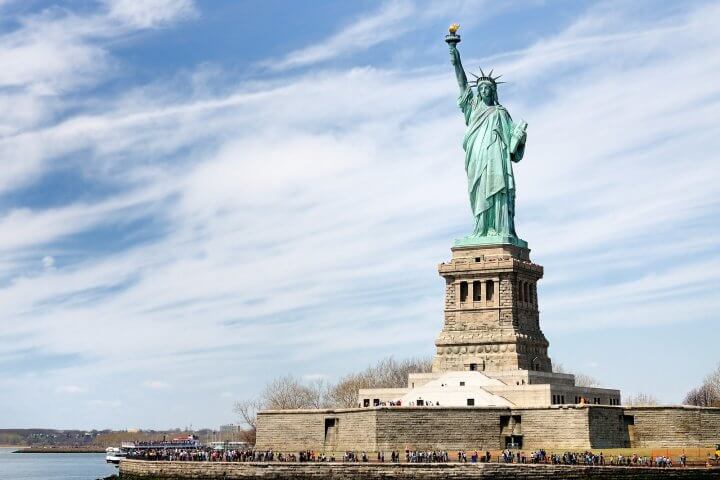The Statue of Liberty was an anniversary gift, of sorts, from the country of France to the United States. The anniversary celebrated was the 100-year anniversary of the independence of the United States from England. Although the original plan was to present the United States with the Statue on the 4th of July 1876, the statue was not dedicated until more than 10 years after that date. This is the history of the building, dedication, and care of the Statue of Liberty.
Two French men were commissioned to design the Statue. The principle designer was Frederic Bartholdi, a prominent French sculptor. Gustave Eiffel, of Eiffel Tower fame, was commissioned to design the skeletal structure of the statue. An agreement between the United States and France, concerning the statue, stated that the American people would design and build the base on which the statue was to sit.
By July 4th, 1876, only the right arm and the torch were finished. France shipped those pieces to the United State and they were displayed in Philadelphia. A small fee was charged to view the pieces, and this money was used to begin to design and construct the pedestal on which the statue would eventually stand.
The head was completed in 1878, a patent was obtained in 1879, and final funding was secured in 1882. In America, the fundraising from views of the arm and torch had not generated much money. Joseph Pulitzer, of Pulitzer Prize fame, took on the fundraising cause and published editorials asking the public to donate. Fundraising on the American side was finally completed in 1885; one year after the statue was completed.
The pedestal was completed in 1886 and then reconstruction of the statue began. France had shipped the statue in more than 300 pieces. The pieces sat in a warehouse for about four months while the pedestal was being constructed. Finally, on October 28th, 1886, the Statue of Liberty was completed. She stood where she stands today, on Liberty Island in the New York Harbor, and she functioned as a lighthouse until 1902.
For immigrants coming to the United States, this was one of the first pieces of Americana to greet them. The inscription on the inside of the pedestal is a poem by Emma Lazarus with a line that reads, “Give me your tired, your poor, Your huddled masses yearning to breathe free”. The Statue of Liberty and this poem became a great symbol of the American dream during the late 1800s and the early 1900s. Now, with jet airplanes, New York Harbor and the Statue of Liberty are no longer the first things that new immigrants see. Still, the Statue of Liberty is one of the most recognizable symbols of America and hundreds of thousands of people visit the statue every year.
Since her dedication, the Statue of Liberty has received several face-lifts and has undergone a few changes. An explosion in 1916 damaged the statue, and due to the damage, the torch had to be replaced. A big restoration project was launched in 1984. The restoration was an attempt to salvage as much of the original statue as possible while patching the cracks and replacing the iron pieces that had galvanized over time. The project was completed in time for the Fourth of July celebration in 1986 and the statue was once again open to the public on the 5th of July 1986.
The statue is currently closed to the public and has been so since the terrorist attack of September 11th, 2001. Tourists can visit the pedestal, but need to get a pass two days prior to visiting the statue.


Leave a Reply